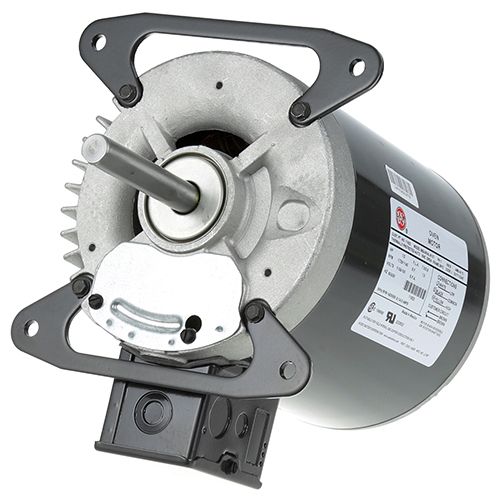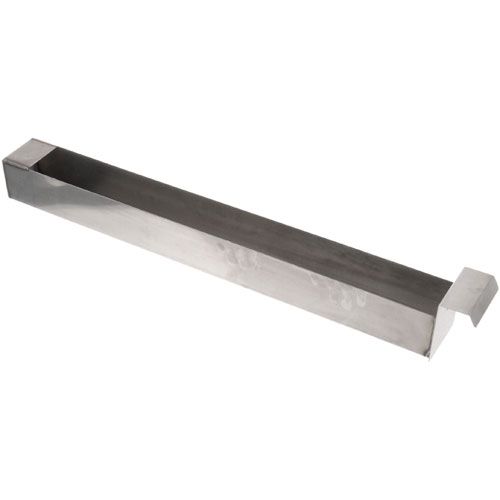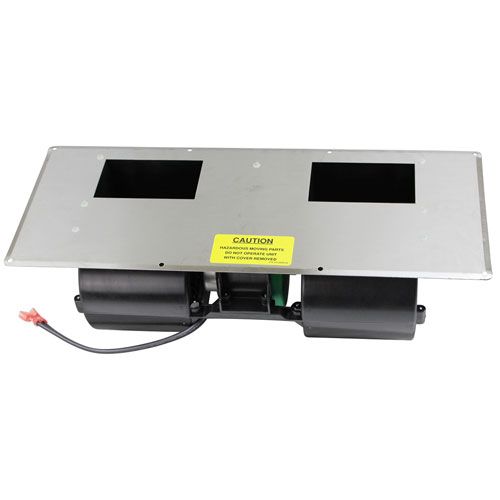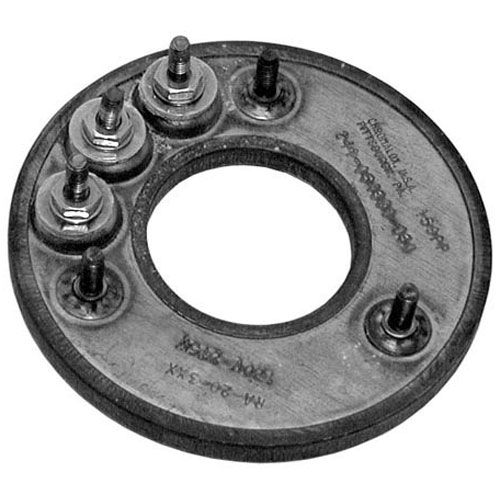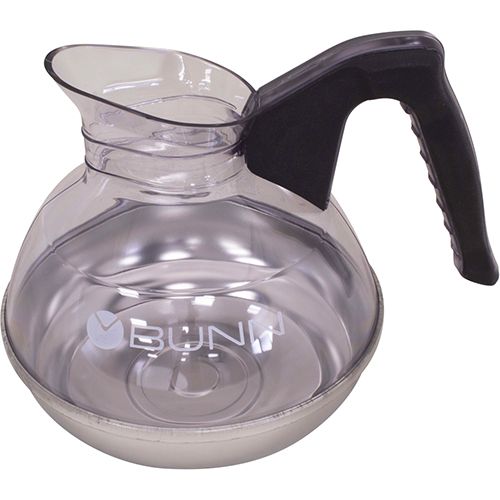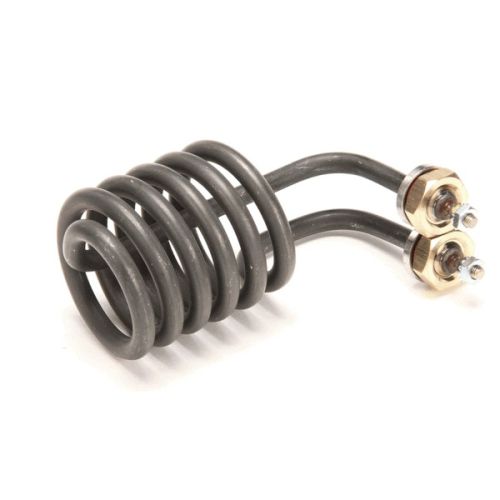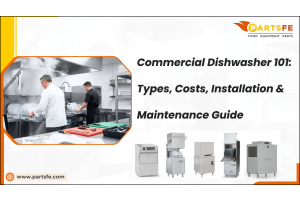Commercial Coffee Maker Parts Guide: Here's What You Need to Know
Running a commercial coffee shop or café involves more than just great coffee. Behind every steaming cup of espresso, cappuccino, or latte, there are complex machines that require regular maintenance and occasional repair. A commercial coffee maker is made up of various intricate components that work together to brew the perfect cup of coffee. Understanding these coffee machine parts is essential for ensuring your equipment runs smoothly and serves your customers consistently.
In this guide, we’ll explore the essential coffee maker parts, how to choose the right parts for your business, common signs that your coffee maker parts need replacement, and some valuable tips for cleaning and maintaining your coffee maker. Whether you're new to the coffee business or have years of experience, this information will help you keep your equipment in top-notch condition.
Understanding the Essential Parts of a Commercial Coffee Maker
The commercial coffee maker system contains multiple essential components that execute the brewing operation. Each feature inside a commercial coffee maker determines both the quality and the consistent performance of your coffee beverage.The following sections examine the coffee maker parts:
Water Reservoir & Pump
-
The water reservoir functions as the storage container for brewing coffee water. Commercial coffee makers feature larger water reservoirs than home machines because they need to handle bigger coffee production volumes. The water reservoir exists either as an integrated machine component or as a standalone unit which needs manual filling based on the model design.
-
The coffee maker pump functions as one of its vital components. The pump serves to move water across the coffee grounds. The pump generates enough pressure to draw out complete coffee flavor from the grounds especially when making espresso. A defective pump system leads to inadequate extraction of coffee which produces substandard beverages.
Heating Elements & Thermostats
-
The coffee maker's heating elements heat water to a temperature range of 190°F to 205°F (88°C to 96°C) which is essential for proper extraction. The boiler contains heating elements as a standard feature in espresso machines. A malfunctioning heating element produces water at improper temperatures which affects the taste of your coffee.
-
The heating elements function together with thermostats to control water temperature. Your machine requires these components to maintain correct temperature operation. A malfunctioning thermostat produces erratic water temperatures that prevents proper control of brewing quality.
Group Heads & Portafilters
-
The portafilters connect to group heads in espresso machines to perform their functions. The group heads function as the connection points between the machine system and the coffee grounds. The group heads apply hot water to coffee grounds in an even manner to achieve consistent extraction results. A clogged or worn group head will produce uneven coffee extraction and result in undesirable flavors.
-
The group head accepts portafilters as baskets which contain ground coffee before insertion. A properly cared for portafilter produces balanced espresso extractions because it works without interruptions. The brewing process becomes compromised when portafilters develop cracks or clogs.
Steam Wands & Frothing Systems
-
The creation of frothy milk for lattes and cappuccinos depends on the functionality of steam wands. The components use steam to create foam and froth in the milk. The performance of a steam wand suffers when it encounters clogs or accumulates minerals from using hard water. The steam wand requires regular maintenance and cleaning to produce proper milk textures during operation.
-
Commercial coffee machines require frothing systems that combine steam wands with automatic frothing mechanisms to maintain consistency and quality in their operations. These systems operate efficiently with big milk volumes thus making them ideal for busy commercial settings.
Coffee Grinder & Hopper
-
The coffee grinder is essential for brewing because it transforms coffee beans into ground coffee. The size of manual coffee grinder grind sets the water filtration rate through coffee particles therefore shaping both the extraction process and taste results. The commercial coffee grinder handles big production needs with its advanced capability to control exact grind sizes. Coffee grinder parts replacement will become necessary to maintain consistent grinding throughout time.
-
The coffee hopper functions as a storage unit for whole beans before grinding takes place. The device contains a substantial amount of beans that enable steady brewing operations without constant addition of more beans. The improper sealing of a hopper allows contaminants to reach the beans while producing stale coffee.
Filters & Valves
-
The purpose of coffee maker filters is to purify water before it reaches the coffee grounds. Commercial coffee machines implement water filters to produce clean water for brewing purposes. The performance of filters deteriorates with time because they get blocked or damaged thus affecting both water quality and coffee taste.
-
Water flow and pressure control along with steam regulation depend on valves to function properly within the coffee machine. The failure of valves in your coffee machine results in leaks and inconsistent pressure control and improper steam generation that creates problems during your coffee preparation.
Drip Trays & Carafes
-
Drip trays serve as critical components because they catch water and coffee that escapes from the machine. The maintenance of these trays requires regular cleaning to preserve hygiene standards and stop harmful build-ups from affecting other machine parts. Commercial coffee machines feature drip trays that need regular checks and emptying because they must handle substantial liquid amounts.
-
Brewed coffee rests inside carafes or coffee pots which serve as the primary storage containers. The capacity of machine carafes varies between small espresso cups and large thermal containers which can hold multiple cups of coffee. The quality of coffee served to customers depends on both the cleanliness and proper condition of the carafes.
Control Panels & Smart Features
-
Present-day industrial coffee machines possess operable control systems which baristas can utilize for customizing their brewing protocol including elements like grind adjustment along with temperature level and water force management. Operators can use smart technology to monitor and remotely adjust their machines through certain models.
-
The features need regular maintenance to operate correctly although they help optimize workflow and maintain consistency. The control panel and smart system malfunctions may cause problems with programming and inconsistent brewing operations.
Choosing the Right Coffee Maker Parts for Your Business
The selection of proper coffee maker parts stands as an essential factor for operating a thriving coffee business. Selecting high-quality durable parts remains vital for running a busy coffee shop because they must withstand heavy usage. Factors to consider include:
-
Machine Compatibility: Check that new replacement parts have the exact specifications which match your coffee maker model. The use of mismatched parts creates operational problems that might break the machine and force expensive maintenance and equipment downtime.
-
Brand Reputation: When selecting parts it is crucial to choose materials from brand names with excellent reputations since they provide enhanced durability. The components that trusted brands supply meet high performance standards as their components undergo tested performance examinations before release ensuring they will operate properly despite demanding commercial environments.
-
Warranty and Support: You should choose coffee maker replacement parts that offer warranty protection because this ensures you have coverage in case of equipment failure. The availability of customer support helps your business avoid operational interruptions by resolving installation and operational problems quickly.
-
Quality of Materials: Commercial coffee machines experience intense use which requires replacement parts made from stainless steel or reinforced plastics because they provide durability under high-usage conditions. The materials possess strong resistance to high temperatures and heavy pressure and wear thereby extending operational times while reducing breakdown occurrences.
At PartsFe, we offer high-quality commercial coffee maker parts to keep your machines running smoothly. Browse our selection of premium components from leading brands like Bunn, Curtis, Cuno, and Allpoints. Find essential parts like coffee grinders, water pumps, steam wands, and heating elements. Shop at PartsFe for reliable, durable parts that ensure the best coffee every time!
Common Signs Your Coffee Maker Parts Need Replacement
The continuous operation of your commercial coffee maker results in part wear which degrades the quality of your brew. The identification of critical replacement indicators enables you to prevent equipment breakdowns and expensive maintenance costs. The following section identifies crucial indicators which signal your coffee maker parts require maintenance or replacement.
-
Water Leaks: Your coffee machine displays water leaks because its seals or gaskets have started to deteriorate. The degradation of these machine parts allows water to leak out from the system. Water leaks that persist during brewing both interrupt the brewing operation and threaten damage to nearby equipment and surrounding surfaces.
-
Inconsistent Brewing: The pump along with heating element and thermostat may fail when inconsistent brewing occurs because of hot or cold coffee. The water temperature and pressure control functions of these components make the brewing process unreliable after they fail. The inconsistent operation results in subpar coffee quality which negatively impacts customer satisfaction.
-
Slow or No Coffee Flow: Your coffee brewing performance will be affected by both clogged filters and broken pumps. The proper functioning of the coffee maker filter depends on these water flow components which become nonfunctional when blocked or damaged. The lack of proper flow prevents your coffee machine from making efficient coffee brews which leads to reduced service speed.
-
Poor Milk Frothing: A malfunctioning frothing system together with a blockage in the steam wand can cause improper milk frothing. The lack of proper steam pressure prevents milk from frothing correctly which results in poor texture quality for both lattes and cappuccinos. The quality of milk-based drinks suffers significantly when this occurs.
-
Burnt Taste: The heating element together with temperature control issues lead to burnt or bitter tasting coffee when they fail to function correctly. Brewing water at high temperatures will damage coffee grounds and produce an undesirable taste. The issue demands inspection of defective parts which might need replacement.
Check out this article Schaerer Coffee Machine Maintenance Guide for understanding and maintaining your Schaerer coffee machine to ensure your equipment runs smoothly.
Cleaning and Maintenance Tips for Long-Lasting Coffee Maker Parts
Commercial coffee makers need proper cleaning and maintenance to achieve longer operational life. The care protocol protects your equipment from breakdowns while guaranteeing sustained coffee quality with a reduction of high-maintenance expenses. The following section presents essential guidelines which will help you maintain your coffee maker parts to achieve extended operational life.
-
Descale Regularly: The minerals in hard water accumulate inside coffee makers which leads to performance degradation and altered flavor quality. Using appropriate descaling solutions on a regular basis removes mineral buildup which results in better coffee taste and smooth operation. Regular descaling maintenance should become a part of your machine maintenance schedule to keep it operating optimally.
-
Regularly clean both Group Heads and Portafilters: The accumulation of coffee grounds inside group heads and portafilters creates barriers that affect the extraction procedure. Regular cleaning of these components together with backflushing procedures enables perfect coffee extraction through optimal flow management.
-
Check for Clogs: Steam wands and filters and valves that become clogged will result in slow operation and uneven brewing. Regular evaluation of these parts helps detect blocking issues so you can execute complete maintenance which stops coffee-making issues and keeps your drinks quality stable.
-
Lubricate Moving Parts: Machine parts which move such as grinders and pumps need regular lubrication because this reduces friction and stops damage. The lifespan of your coffee machine extends and breakdowns decrease when you maintain regular lubrication for its operational components.
-
Replace Filters and Gaskets: Water filters and gaskets deteriorate with time which results in leaks or compromised water quality. Regular replacement of these parts ensures coffee machine water flow stability and prevents leaks while delivering fresh-tasting pure coffee.
Check out this article How to Clean Hamilton Beach Coffee Maker Guide for more tips on coffee machines maintenance and extending its lifespan.
A commercial coffee maker requires knowledge about coffee maker parts which produce optimal brewing results. The water reservoir and pump together with heating elements and group heads function as essential components which work together to provide consistent high-quality coffee. Equipment longevity alongside protection against expenses from machine breakdown occurs through regular maintenance and expeditious replacements of parts. Your customers will always receive the best possible coffee experience when your coffee machine remains in excellent condition.
FAQs
Why is coffee machine cleaning important?
Cleaning a coffee machine is important to keep your coffee tasting its best and your equipment in good working condition. Coffee residue, oil, and minerals can build up on equipment over time, reducing both the flavor of your coffee and the performance of your machine.
How can I tell if my coffee machine needs repair?
If your coffee machine is having problems such as inconsistent brewing, leakage of water, no steam emission, or poor coffee flow, it might need to be repaired. Early checking and fixing of issues can prevent damage and the need for expensive repairs in the future.
Can I replace parts of a coffee maker myself?
Yes, most parts of a coffee maker can be replaced by the user, including filters, gaskets, and portafilters. But for more complicated parts like the pump or heating element, it is advisable to seek the services of a professional for repairs or replacement.
Are coffee machine parts compatible across different brands?
Coffee machine parts are not necessarily compatible between different brands because designs can be different. Always verify the manufacturer's specifications and recommendations before buying substitute parts to prevent any operational faults.


